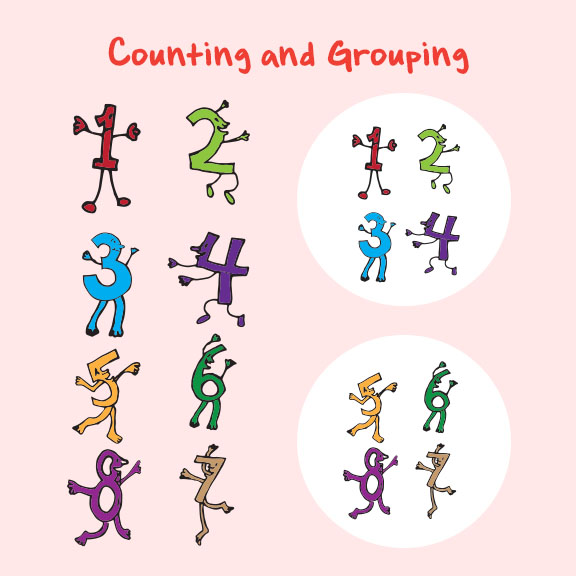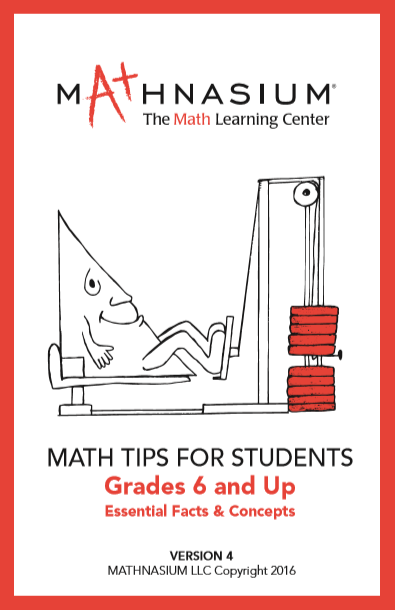Many times, when students of all ages come to Mathnasium in need of math help, their math troubles can be traced back to a lack of number sense—an intuitive grasp of how numbers work! What’s the first step to gaining number sense? Well, the most basic skills in mathematics involve counting and grouping (seeing numbers in groups). When mathing with your kids, try the exercises outlined below. While they may seem easy at first glance, these exercises are anything but child’s play. They’re appropriate for any person of any age who needs help gaining fluency in basic math skills. The trick is to do these exercises mentally—with little to no writing. However, using pictures as visual aids and real-world objects (counters, coins, blocks, raisins, etc.) as manipulatives can make math come alive!
Counting:
To develop counting skills, help your child learn to count from any number, to any number, by any number!
- Count by 1s, starting at 0 (0, 1, 2, 3, … 250…)
… then starting at any number (28, 29, 30…)
- Count by 2s, starting at 0 (0, 2, 4, 6, 8… 24…)
… then starting at 1 (1, 3, 5… 25)
… then starting at any number (23, 25, 27… 49 …)
- Count by 10s, starting at 0 (0, 10, 20 … 500 …)
… then starting at 5 (5, 15, 25 … 205 …)
… then starting at any number (37, 47, 57, 67 … 347 …)
- Count by 1/2s , starting at 0 (0, ½, 1, 1 ½, … 5 …)
… then by 1/4s, starting at 0 (0, ¼, 2/4 or ½, ¾, 4/4 or 1, 1 ¼ …)
… then by 3/4s, starting at 0 (0, ¾, 1 ½, 2 ¼, 3 …)
- Count by 15s, starting at 0 (0, 15, 30 … 120 …)
- Count by 3s, 4s, 6s, 7s, 8s, 9s, 11s, 12s, 20s, 25s, 50s, 75s, 100s, and 150s, starting at 0.
Can you see how this type of counting practice will, in time, result in strong addition skills and the painless mastery of times tables?
Grouping:
To help your child strengthen number sense, expand their thinking processes and help them see numbers in groups! Ask questions like:
- “7 and how much more make 10?” “70 and how much more make 100?” “700 and how much more make 1,000?”
- “10 and how much more make 15?” “10 and how much more make 18?” “10 and how much more make 25?”
- “17 and how much more make 20?” “87 and how much more make 100?” “667 and how much more make 1,000?”
- “How far is it from 6 to 10?” “How far is it from 89 to 100?” “How far is it from 678 to 1,000?”
- “How many 10s are there in 70? …100? …200? …340? … 500? … 1,000? … 10,000? … 1,000,000 … a quadrillion (15 zeroes!)?”
- “How many 4-person teams can you make out of 12 kids? … 20 kids? … 50 kids? … 100 kids?”
- “How much is 5, four times? … ten times? … a hundred times? … a thousand times?”
Notice how these questions focus on the number 10, multiples of 10, and powers of 10. Also, these questions are a great way to introduce multiplication and division concepts before your child encounters them in school!
Which techniques do you use when you math with your child at home?









